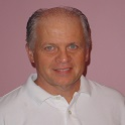Sending and receiving information on wireless networks has been impossible to date because of their design. However, that could change because of the work of three graduate students at Stanford University.

Sending and receiving information on wireless networks has been impossible to date because of their design. However, that could change because of the work of three graduate students at Stanford University.Traditionally, wireless connections have been one way communications vehicles. If more than one type of traffic flowed over a specific frequency, the devices became confused and the transmission garbled.
Electrical engineering graduate students, Jung Il Choi, Mayank Jain and Kannan Srinivasan fixed that problem by developing technology similar to noise-canceling headphones. Their approach takes advantage of the fact that each radio knows what it is transmitting and hence what its receiver should filter out. The new feature means that companies should be able to send twice as much as data on their wireless networks.
However, a few steps still have to be taken before the technology impacts small and medium businesses. First, a few technical kinks need to be ironed out. The group is currently trying to increase both the strength of the transmissions and the distances over which they work, improvements needed for use in Wi-Fi networks. In addition, the group has filed for a provisional patent on the technology and plans to commercialize it. Once those hurdles are cleared, businesses could see a significant increase in the amount of traffic that their Wi-Fi networks support, a capability that may be needed if video usage continues to grow.
About the Author(s)
You May Also Like







